#wetland mammals
Explore tagged Tumblr posts
Text
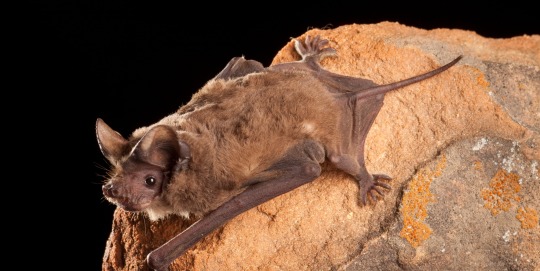
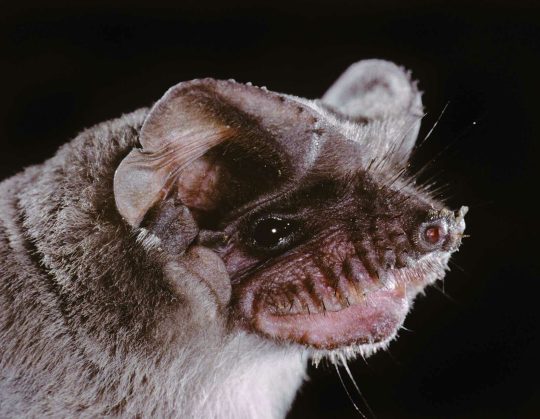

Fly Free with the Mexican Free-tailed Bat
Also known as the Brazilian free-tailed bat, guano bat, or Tadarida brasiliensis, this member of the order Chiroptera is one of the most widely-distributed New World bat species. They are common throughout the southern United States, Central America, and western South America. In many parts of the southern United States, the species is migratory and moves to Central America for the winter. They roost primarily in caves, but can also build nests in buildings; because of this, they can be found in a range of habitats including tropical and deciduous forests, mountains, deserts, and urban areas.
Like most bats, the Mexican free-tailed bat is nocturnal, emerging at sunset to hunt. They are primarily insectivores, and will travel great over 31 km (50 mi) to find food. In fact, this species holds the record for both the highest recorded flight altitude-- at 3.3 km (2 mi) high-- and the fastest flight speed-- an astounding 160 kph (99.4 mph)! That makes the Brazilian free-tailed bat the fastest mammal on Earth, although they can only achieve those top speeds in short bursts and with a good tail wind. Moving that fast can be useful, not only for covering great distances or catching insects, but for avoiding predators like raptors and owls. Young bats that can't fly may also be susceptible to opossums, skunks, and snakes.
The roosts of T. brasiliensis can be quite large; many contain several thousand individuals, while some have been recorded as housing more than a million. For this reason, communication is very important. Mexican free-tailed bats use echolocation to navigate and, for mothers, to locate their young. This species has over 15 distinct calls just for socialization. In addition, they can use their vocalizations to 'jam' the echolocation of other rival species and steal their prey.
Mating for the Brazilian free-tailed bat occurs once a year in the spring. Females gather in large maternity groups, while males mark out a territory by urinating and emitting loud vocalizations. Once a pair mates, the two separate- often to seek out another partner. Gestation lasts 11-12 weeks, and once females give birth they leave their offspring in a group of pups known as a creche, that is cared for communally. The pups take 4-7 weeks to be weaned, and after they learn to fly they join the larger roost as independent adults. However, females take up to 9 months to become sexually mature, while males may take as long as 2 years. In the wild, an individual may live as long as 8 years.
Size-wise, T. brasiliensis is on the smaller side of the bat group. Most individuals are around 9 cm (3.5 in) in length and weigh around 7–12 g (0.25–0.42 oz), with a wingspan of 28 cm (11 in). Females tend to be slightly heavier, but not larger otherwise. The tail of the Mexican free-tailed bat accounts for nearly half its total body length, and is unconnected by the thin membrane that makes up its wings (the uropatagium)-- hence the name 'free-tailed'. The ears are large and rounded, to assist with echolocation, and the muzzle is heavily wrinkled to give them a wider gape when catching bugs in mid-air. The Brazilian free-tailed bat's fur is dark brown or gray, with no distinguishing features save the long, white bristles around their feet.
Conservation status: The IUCN has classified the Mexican free-tailed bat as Near Threatened. However, populations are declining due to habitat destruction and susceptibility to a fungus known as white nose syndrome. Governments in the southern United States and Mexico, as well as private NGOs like Bat Conservation International, have established laws and conservation areas to protect the species.
If you like what I do, consider leaving a tip or buying me a kofi!
Photos
Michael Durham
Merlin D. Tuttle
Carlos Russi
#mexican free-tailed bat#Chiroptera#Molossidae#free-tailed bats#bats#mammals#generalist mammals#tropical forest mammals#deciduous forest mammals#wetland mammals#desert mammals#north america#southern north america#central america#south america#western south america
121 notes
·
View notes
Text
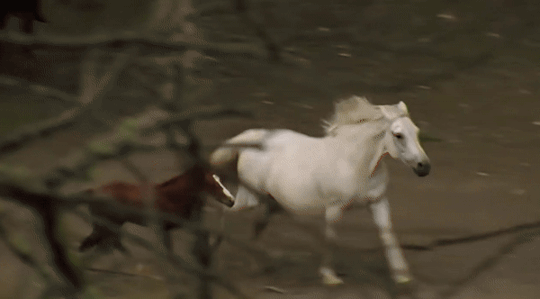
#horses#horse#animals#mustangs#science#education#nature#photography#animal#landsccape#cute animals#funny#lol#adorable#landscape#paradise#explore#gifs#beautiful#beauty#primates#zoos#mammals#wild animals#wildlife#mountain#incredible#running#wetland#river
388 notes
·
View notes
Note
Do a Hippo Moodboard! 🤣
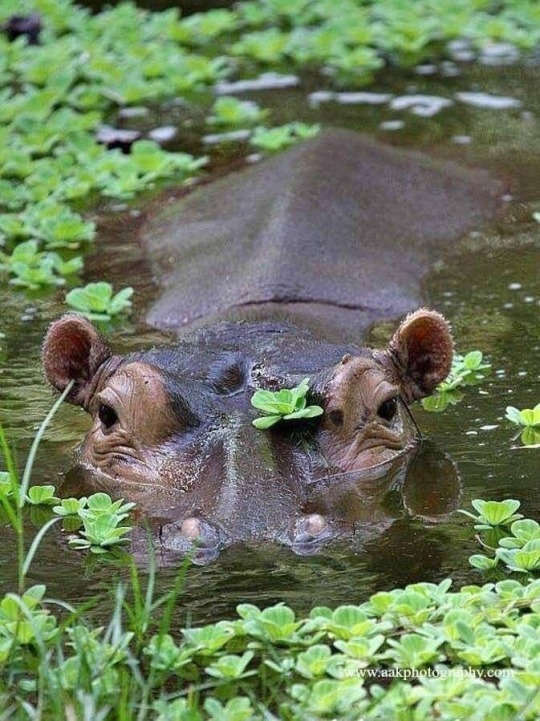
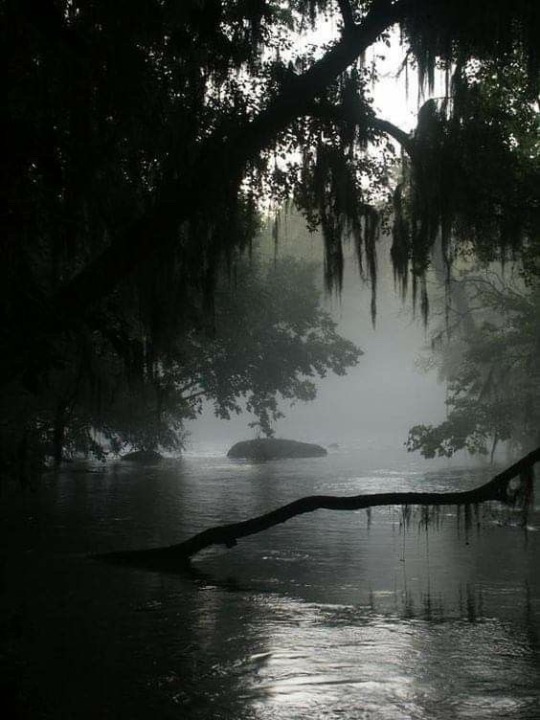
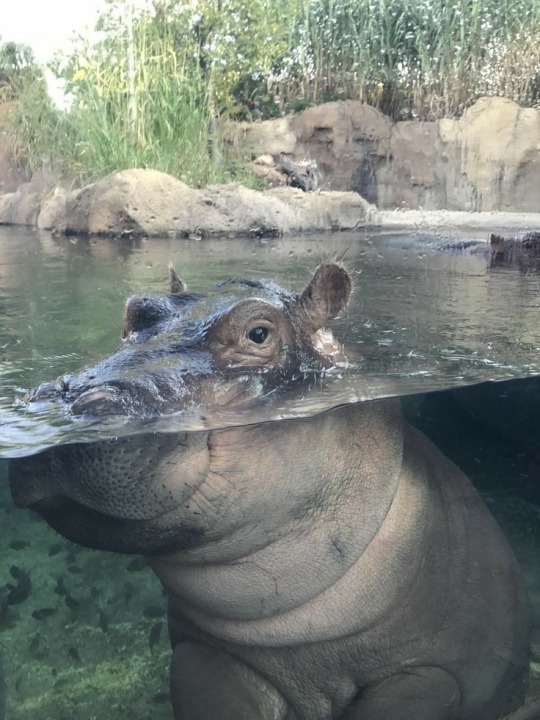
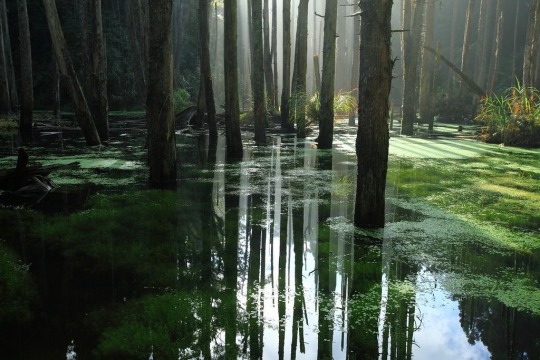
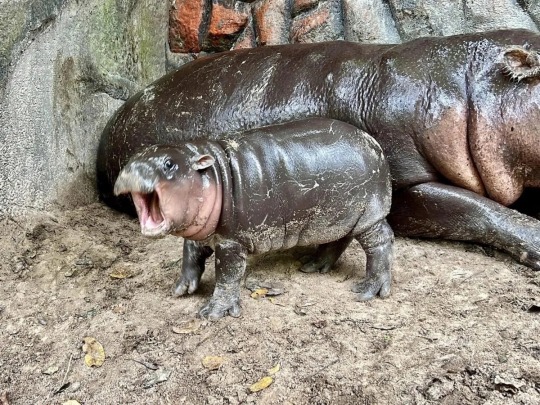
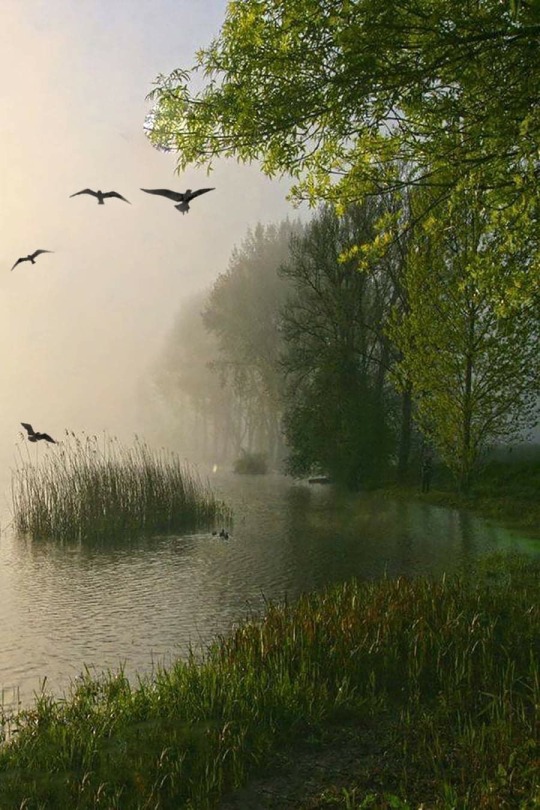
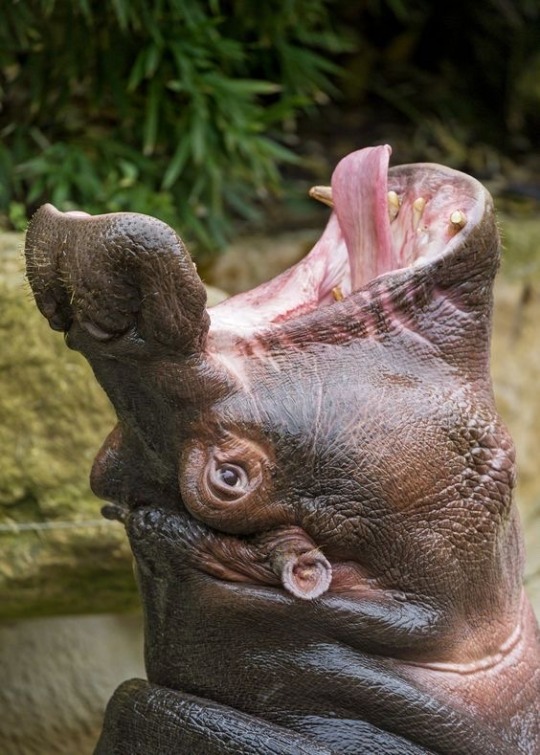
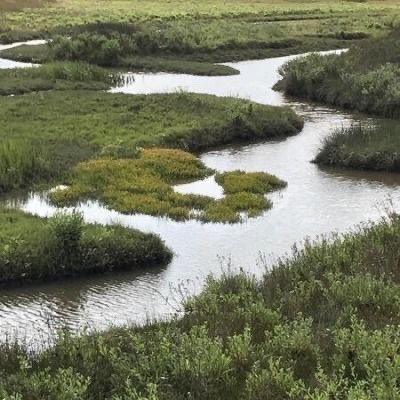
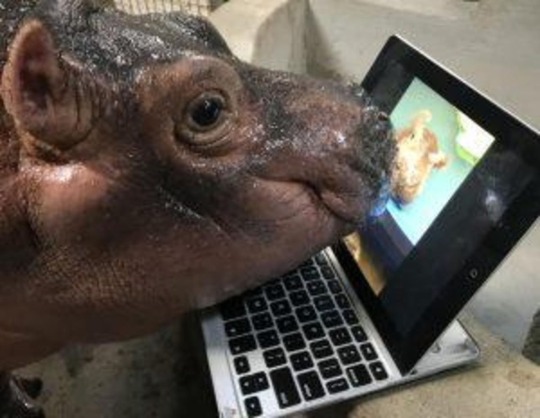
Hippos (Hippopotamus amphibius)
#livi’s moodboards#aesthetic#moodboards#moodboard#gray#nature#green#wetlands#hippos#hippopotamus#fiona the hippo#animals#hippo#hippopotamus amphibius#mammals#African wildlife#wildlife#zoo#moo Deng#swamps
67 notes
·
View notes
Text
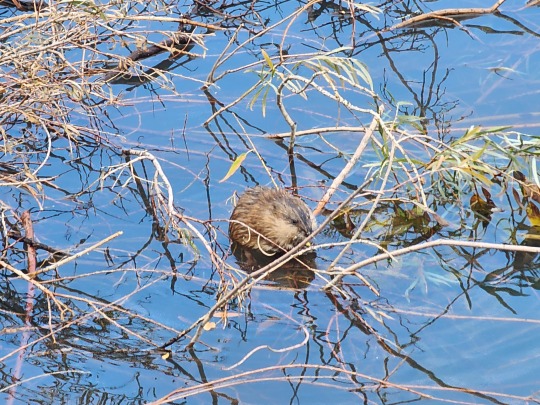
#Wildlife#Wetlands#Muskrat Life#River Critters#Nature Photography#Serene Scenes#Aquatic Habitat#Colorado Wildlife#Small Mammals#MissedMileMarkers
53 notes
·
View notes
Text

After sunset, the bobcat (Lynx rufus) woke up, walked out followed by rolling on the ground and stretching. Then it walked right up to me, just to the other side of the hedge between us, and peeked through it at me, too close for photos. Sweetwater Wetlands, Tucson, Arizona, USA. 24 January 2019. COTH
By Paule Hjertaas
#paule hjertaas#photographer#sunset#bobcat#lynx rufus#cat#animal#mammal#wildlife#sweetwater wetlands#tucson#arizona#nature
109 notes
·
View notes
Text

Animal of the Day has returned once more! Today's animal is the:
Marsh Deer! (Blastocerus dichotomus)
The marsh deer, endemic to South America, is the only known species in its genus! It leads a semi-aquatic lifestyle, choosing to inhabit wetland areas and using the membranes between its hoof digits to be able to swim and traverse waterlogged ground! Unlike many other deer species, the marsh deer is mostly solitary, and the largest groups are usually comprised of six individuals!
[If you look closely, in the background of the photo you can actually see a small caiman! Stay safe, marsh deer!]
Image source: https://oncafari.org/en/especie_fauna/marsh-deer/
#antlers#deer#cervidae#mammals#weird animals#animals#aotd#animal of the day#marsh deer#wetlands#swamps#south america#caiman cameo#herbivore#zoology#animalblr
6 notes
·
View notes
Text
"the fuck you looking at? Keep rowing"

#river otter#otter#mustelid#mammal#fish#vertebrate#animal#predation#animal death#NATURE'S UNFATHOMABLE CRUELTY#wet#>:()#duckweed#cattail#plant#wetland#standing#cranky#hungry#whisker
6K notes
·
View notes
Text


#A group of some laid back and happy reptile-folk#I imagine them living around the marshy areas and would have other species including the merfolk#this would prolly include wetland animals altogether since the area would be pretty large and doesnt just stop at the marsh or swamp edges#i mostly just wanted to practice drawing different shapes especially reptiles since their facial structure is so different to mammals#artists on tumblr#character art#digital illustration#sketch#imps rest#artwork#world building#illustration
1 note
·
View note
Text
Okay, I know people as a general rule tend to not care about invertebrates as much as cute, fuzzy mammals, but this is a must-read if you care about animal welfare. The short version is that horseshoe crab blood has been used for decades in medicine as a way to test whether something is truly sterile; the blood clots in the presence of bacteria. Since then millions of horseshoe crabs have been captured and drained of blood, even though a synthetic alternative was developed a few years ago.
They go through a pretty brutal experience in the process. They're caught by fishermen who often throw them by their tails into a pile in the open air, and they're then trucked to a bleeding facility where they're strapped down and their blood is removed with needles jabbed directly into their hearts. Over half their blood may be taken, after which they're supposed to be returned to the ocean. However, it's likely many of them never make it back, instead turned into fish bait and sold by the same fishermen who caught them in the first place.
Apart from the fact that this is a horrific thing to put any animal through, the attrition due to fatalities has put a serious dent in horseshoe crab numbers. This is compounded by massive habitat loss, pollution, and the capture of horseshoe crabs as food, particularly as the females of one species are considered a delicacy. And other animals that rely on horseshoe crabs are suffering, too. The American rufa subspecies of the red knot, a medium-sized shorebird, is critically endangered as the horseshoe crab eggs it must have in order to successfully complete migration have become increasingly scarce, and it is likely the bird will become extinct if trends continue.
While there are guidelines for medical horseshoe crab harvest, they're considered optional. The few laws that exist are poorly enforced. Short of a complete ban on horseshoe crab blood in favor of the synthetic alternative, these animals are in very real danger of going extinct after a history spanning over 400 million years on this planet.
Thankfully, this article is not the first to bring forth the issues surrounding horseshoe crab harvest. Here are a few resources for further information and action (US based, though horseshoe crabs are threatened throughout their entire range):
Horseshoe Crab Conservation Network - https://horseshoecrab.org/conservation/
Wetlands Institute - https://wetlandsinstitute.org/conservation/horseshoe-crab-conservation/
Horseshoe Crab Recovery Coalition - https://hscrabrecovery.org/
#animal welfare#animal cruelty#cw animal cruelty#animal suffering#horseshoe crabs#invertebrates#wildlife#animals#environment#conservation#endangered species#extinction#nature#medicine#science#scicomm#science communication
8K notes
·
View notes
Text
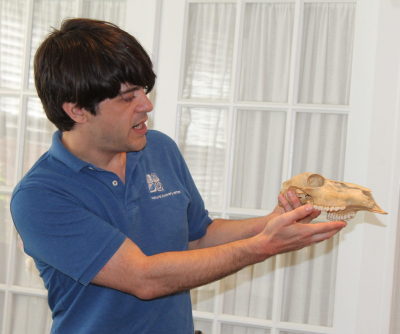
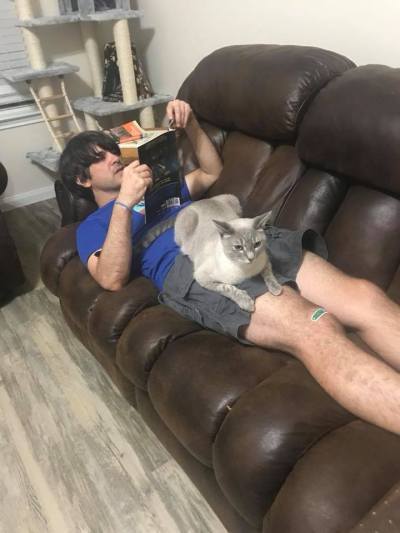

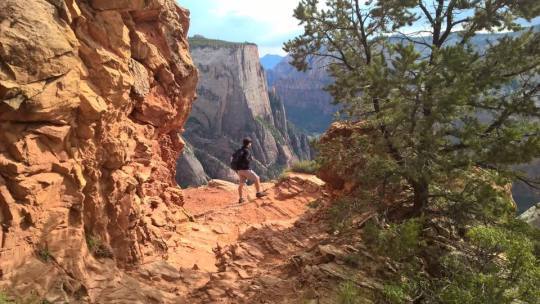

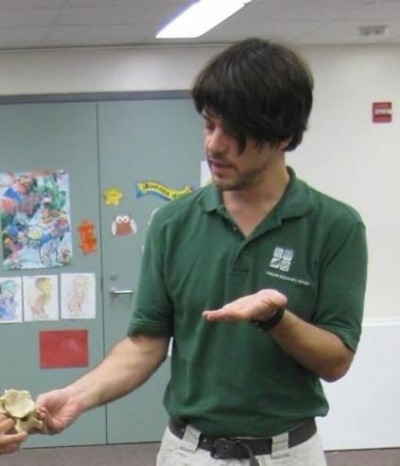
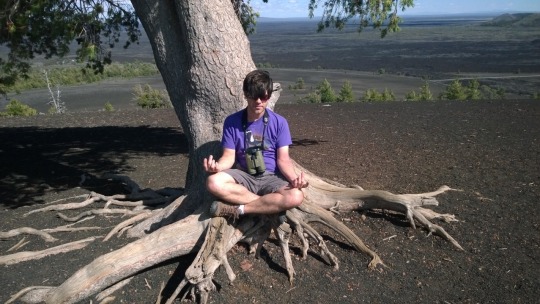
Hey Y'all, This is me. I'm Paxon.
Wildlife biologist. Latinx. 47 yo. Houston, TX. Queer. Cis-male. He/him. Antiracist. ANTIFA. Vegetarian. (On Tumblr since 2009)
Punk's not dead. Fuck TERFS. FUCK TRUMP. Black lives matter. Fight til you die!
This is my blog for non-mammalian zoology, mostly herps and birds, but plenty of space for other animals.
If you feel like sharing photos or just talking, I'm around.
Some of my interests are:
Birdwatching and Ornithology, Herpetology, Entomology, Pollinators, Native plant gardening for wildlife, Hiking, National Parks (35 so far), Rainforest, prairie, and wetland ecology, Poetry, Star Wars, Sci-fi, Anime, Pokemon, queer theory, gender theory, feminism, radical left politics, philosophy, punk, jazz, old school hip hop.
I'm a wildlife biologist. I have worked in this field since I was 17.
Amphibian call counts
Deer and small mammal surveys
Reptile surveys
Insect surveys
Bayou fish surveys
Shark surveys in Florida Bay
Bird counts
Bird nestbox surveys (Eastern Bluebird, Prothonotary Warbler, and Goldeneye)
Piping Plover, Roseate Tern, Whip-poor-will, American Woodcock, and Osprey monitoring
Loggerhead Sea Turtle Monitoring
King Eider surveys and monitoring on the North Slope of Alaska
Nature and science education and guiding
Rainforest guiding in Ecuador
Controlled prairie burns
Wetland plant restoration
Drop by and say hi.
Love you, xoxo.
203 notes
·
View notes
Text


Just dropping some illustrations of animals that I've only mentioned in passing (mostly in regional food posts), found within claimed Imperial Wardi territory.
Left to right (all to scale):
Grynaig, crested eagle, taarn, unkata, piispiispi, anara, nechoi.
Descriptions below:
The grynaig, a type of pigeon found primarily in the highlands. They come in a few local color morphs, ranging from this brown-white to a chestnut color (mostly dependent on the types of rocks they nest upon). They nest on the tops and sides of boulders and cliffs, out of reach from most ground-based predators and camouflaged from predatory birds above. They are commonly hunted for food, and are regarded as having beautiful calls.
The crested eagle, found widely across the region. They are specialized predators of snakes and will readily attack highly venomous species, having thick-skinned, pebbly textured legs as defense against bites. They will also take other reptiles, and occasionally prey on small birds and mammals. Among the peoples of the highlands, widespread belief holds these to be (one of many) birds that ancestors will send or take the form of in order to provide guidance and give omens to the living. Crested eagles are often an omen of hidden danger, be it a figurative or literal snake in the grass.
The taarn, a pheasant native to the highlands and domesticated for meat and eggs. The domestic stock has several color morphs and a few distinct breeds, a wild male taarn is pictured here. Wild taarn can be found in high altitudes in the warm dry season, and migrate down to the river valleys in the cold wet season. Taarn form the vast majority of captive fowl in the highlands, being the most tolerant of cooler, high altitude conditions. Males possess sharp spurs, and are used regionally for cockfighting. Cockfighting is also popular in parts of the Imperial Wardi cultural sphere and taarn may be exported largely for this purpose, being imagined as uniquely fierce, having been shaped by their hostile environment (in reality, they don't tend to fare well against the common rooster).
The unkata, a genus of large flightless birds. Several species can be found in the region, all of which are flightless and relatively large. The one here is a male savannah unkata in breeding plumage (about the size of a cassowary). Male unkata often have colorful wings, and all possess long, unfeathered quills. The wings are shaken as a part of courtship displays, creating a rattling sound and dazzling visual effect. These birds are herbivores and feed on grass, leaves, tender shoots, and fruit, but will consume insects and small mammals/reptiles when the opportunity presents itself. Most unkata are commonly hunted as wild game, and their large eggs are often prized as food and used for carving.
The piispiispi, named for its devastatingly silly warning cries (the sound is a shrill PeEEESSsss-PeEEESSsss-PIPIPIPIPI!). This is a fairly large and stocky lagomorph that lives only in the highlands and almost exclusively at high altitudes (with rabbits filling their niches in the river valleys). They subsist primarily on grasses, and are known agricultural pests. They pack on substantial weight prior to the winters (which is the best time to hunt them for rich, fatty meat), but do not truly hibernate, instead alternating between periods of low activity in their burrows and emerging to graze (the winters here are relatively warm, and snow cover is often patchy or impermanent at all but the highest altitudes).
The anara, a genus of large semi-aquatic rodent. Two species can be found in the region (the larger of which is shown here, both look very similar) and can be found throughout in most rivers, lakes, ponds, and wetlands. Their tail is flattened vertically and used to propel them through water, though they retain (relatively) long legs, as they spend much of their time foraging on land, usually staying within a couple hundred feet of water. They are considered agricultural pests, and are commonly hunted for pest control and their meat (particularly the tail, which is uniquely rich and fatty).
They construct small lodges along banks for shelter in a similar capacity to beavers. They do not build dams, but dig canals to connect bodies of water (for ease of movement and to flee from predators). These canals are often expanded by the comings and goings of an-nechoi, and together the two species are of key ecological significance to their environments, vastly expanding the size of wetlands and the reach of seasonal floods. The two species also seem to get along quite well (especially given the notoriously bad temper of an-nechoi, and the bite-sized nature of anara), often peacefully sharing the same habitats in close quarters. Young anara are sometimes even seen resting on the backs of submerged an-nechoi. This connection is widely noted, and a subject of many regional animal folktales.
Nechoi, a family of pig-like opportunistic omnivores. The one pictured here is a scrub nechoi, one of the larger in the region (though dwarved by their somewhat distant, semi-aquatic an-nechoi relatives). These are the most widespread and generalized, and fare well in dry environments (mostly being found in the grasslands and savannahs). The skin of this species is exposed (though they bear a dense mane and thick, wiry hairs throughout), and they will coat themselves in mud and dust to protect against the sun and parasites. This particular species bears impressive tusks in the boars, and smaller tusks in the sows (shown here), and they are often hunted for their ivory.
Most nechoi bear very powerful jaws with a wide gape, and boars will fight over territory and mates by yawning and slashing at each other with their sharp teeth. These conflicts result in a scarred appearance in most older boars, and can sometimes be fatal. As with most nechoi, these animals feed primarily as browsers, but will readily scavenge and may opportunistically take live prey, mostly arthropods and small vertebrates. Predatory attacks on animals bigger than they can fit into their mouths are rare, but larger nechoi such as these are considered dangerous, and may readily eat humans injured or killed in territorial or defensive aggression. These more dangerous nechoi are sometimes subjects to taboos against eating the flesh of man-eaters, though smaller nechoi are common game animals.
#creatures#I have not decided if pigs exist in this universe or not. I've mentioned them before (I think just as 'hogs') but they may or may#not be domesticated and/or smallish species of nechoi#We'll see
295 notes
·
View notes
Text
Nature Ask Meme 🍄🦌🌳
Send me a number and I'll answer or post a photo!
Do you have a favorite place near you to "touch grass"?
What was your weirdest favorite animal as a kid?
If you could see any extinct species in the wild, what would it be?
If you could see any non-extinct species in the wild, what would it be?
What's the coolest wildlife behavior you've ever seen?
What's your favorite bird you've ever seen?
What's your favorite bird song or call?
Can you identify birds by song or call?
Do you have a favorite nature photo you've ever taken?
What's your favorite invertebrate?
Are you scared of any animals?
What stereotypical "icky" or "scary" animals would you defend to your last breath?
What is the ugliest mammal? What about the ugliest bird?
What animal has the cutest babies?
If you could domesticate any kind of animal as a pet, what would it be?
Would you rather see a volcano or a waterfall?
Would you be more scared caving or mountain climbing?
What's your favorite nonfiction book about nature?
What's your favorite fiction book about nature?
What's your favorite poem or song lyric about nature?
What's the most underrated mushroom?
Can you identify any mushrooms? How confidently?
Bioluminescence or mycelial networking?
What's your favorite freshwater fish?
What's your favorite plant to grow yourself?
Have you ever made a meal from food you've hunted/fished/foraged yourself?
What's your favorite outdoor activity?
What's your favorite local animal you see all the time but still love?
What's your favorite type of wetland?
What is your ideal weather?
Thunderstorms or fog?
If you had to give a presentation on any nature topic without any prep, what would you pick?
What is your favorite predator-prey relationship?
What is your favorite mutualism?
What is your favorite natural "cycle"?
What is your favorite adaptation?
Do you have a favorite piece of clothing with a nature pattern on it?
What is the most underrated ecosystem?
What ecosystem do you consider your "home" ecosystem?
What is your favorite kind of rock formation?
Igneous, sedimentary, or metamorphic rock?
What is your favorite mountain range? Favorite individual peak?
Have you ever felt an earthquake?
Geysers or hot springs?
What is your favorite wildflower?
What is your favorite plant or flower smell?
What is your favorite species of tree?
Do you have a favorite individual tree?
What fictional species would you most like to observe in the wild, if it were real? Are there any ways to interact with fictional organisms you wish you had the opportunity to do?
What fictional environment would you most like to explore?
#ask meme#ask prompts#i do not actually like dualistic views of nature but these were fun to write and it's better than 'wilderness' etc#credit to @elwingflight and @dancing-my-life-away for brainstorming questions!
114 notes
·
View notes
Text

#horses#horse#animals#mustangs#science#education#nature#photography#animal#landsccape#cute animals#funny#lol#adorable#landscape#paradise#explore#gifs#beautiful#beauty#primates#zoos#mammals#wild animals#wildlife#mountain#incredible#running#wetland#river
125 notes
·
View notes
Text




the pied harrier is a medium-sized bird of prey with a wide distribution throughout asia. they are known for their distributive black-and-white coloration. this is a migratory species; during the breeding season, they are found in a wide range from russia to north korea , and during the winter they can be found anywhere between pakistan and the philippines. they feed on small mammals, reptiles, and small birds. the pied harrier also prefers wetland habitat.
3K notes
·
View notes
Note
what are the main prey animals that Shadowclan eat in better bones? because in my rewrite, i can only find like 5 british marshland birds, the frogs like canon, and a common lizard, while the other clans have dozens of prey species. I don't think 7 prey species can feed 50 cats for the generations i need them to, yknow?
This is hard to find out because of the unfortunate reality that wetlands are an "unpopular" natural biome. It's hell out there. No one appreciates their local swamps and marshes </3
But I'M here, NUMBER 1 GOO FAN. Quickie on some of the most common species ShadowClan will be hunting, in an English wetland. 5 for your convenience.
Small intro/recap to BB!ShadowClan's food culture; For a mixture of several reasons, including early collaboration and trade with WindClan, living in an area heavily affected by seasonal changes, and cultural pride in being able to eat anything, ShadowClan has one of the most varied diets of any Clan. Mammals, fish, birds, if they can get their mouth on it, they will eat it.
(Yes. This means predators as well. Other Clans will avoid eating predators for culture and taste reasons. ShadowClan finds it offensive to just let good meat rot.)
The most important reason in that list must be stressed; winter is CRUEL to ShadowClan. The RiverClan river is a moving source of water which rarely completely ices over, most animals in ThunderClan don't hibernate, WindClan's rabbits are active in the snow. For most Clans, they will not feel the "bite" of winter until towards the end, when the prey populations crash. ShadowClan feels it immediately.
That's a problem because Prey Item Number 1 Will Surprise you. The most popular prey in ShadowClan is...
1: Ducks.
And with the most common species, mallards, at about 2 pounds on average (with males being slightly larger) you're looking at 5,442 calories each. Enough to feed 15 warriors for a day.
(Note: This estimate is low; actual value would probably be higher. This measurement is taken from this chart which measured whole carcasses and caloric value rounded from 5.9 to 6, and this particular duck was "dressed"-- so its organs, the most valuable part of the animal, were already removed.)
Ducks are SO valuable as prey it's hard to oversell them. They're huge, they're highly nutritious (thiamin, vitamin a, vitamin b, iron), and they're PACKED with fats. They also lay eggs, TONS of them, which ShadowClan will happily snatch from inattentive hens.
The problem with ducks is, they don't stick around in the winter. Mallards might stay if the weather is mild, but if the water starts freezing, they're a-leaving.
That means that right when ShadowClan needs them the most, they'll vanish. If the marsh freezes, which is VERY likely because it's stillwater, they can't access ANYTHING under the ice. So Prey Animal Number 2 ALSO becomes an issue;
2: Carp
Their size and weight varies immensely, but the european carp is a species that AVERAGES 6 - 15 pounds. Using our rough estimation numbers and only a 6 pound fish, that's 10,884 calories. That's a whole Clan fed, if it's rationed perfectly.
Many carp are larger and heavier than cats. Here is a picture of a human fisher with two 5-pound bass so you can get a feel for just how big fish are

The biggest problem with carp, aside from the fact that icy winter conditions will block access to catching them, is that their gallbladders are poisonous. Carp bile is the only dangerous type of bile Clan cats encounter (that I know about so far). When being eaten, Clan cats must take care to gut them gently and remove the organ without spilling toxic green slime everywhere.
(ShadowClan actually collects and uses this bile for other purposes. Dried and diluted, it can be used as a medicine for treating parasites, and wet and mixed into a poultice it can be used to dress wounds. If gargled, it can also dissolve and loosen stuck bones in the throat, VERY important for unknowing kittens who tried to eat cooked bird bones.)
These two are the most common animals in the highly varied ShadowClan diet. Hunt in the shallow marsh, and you're bound to bump into either a duck or a carp at some point.
But when winter rolls in, they start to rely on mammalian prey.
3: Rats
While some rats can breach 2 pounds (SHOUT OUT TO ALL MY NEW YORKERS) most of them only clock in at about half a pound-- 250 grams. That's 1,250 calories. About 3 cats fed.
(NOTE: These estimations of how MANY cats they feed assumes that these bites are being distributed evenly, such as if the animal was being put into a soup or meticulously portioned. It's more likely that a single rat is eaten alone or only shared between two warriors who then bulk up. The sensation of "fullness" is determined by weight rather than caloric value.)
Rats are highly adaptable omnivores, but most of their diet is actually plants! Humans associate them with garbage and filth, and yes, the rats from carrionplace would certainly taste awful. But most of the rats ShadowClan catches would be living in natural conditions, eating nuts, fruits, and smaller animals. So it doesn't make sense that canon sees ALL rats as dirty-- they should actually be a HUGE part of a warrior's diet!
Especially in ShadowClan, where the invasive brown rat has all but eliminated the native black rat population. Brown rats are huge, thick-tailed, excellent swimmers who stick around in the winter and find themselves right at home in a marsh or swamp.
In fact, ShadowClan thinks hunting them is a two-way blessing. A cat stays fed through the winter, and more resources are freed up for the rarer, but more delicious water vole. ThunderClan isn't the only Clan that understands population management.
And speaking of...
4: Squirrels
Significantly smaller than carp and ducks, gray squirrels are usually about 500 grams. I've heard it said that they triple in mass over the winter, but since I'm not sure if that means they triple in weight, I'll simply rule that a wintertime gray squirrel is 1000 grams. Which means about 5,000 calories, enough to feed 14 cats.
...but also. don't underestimate how big a squirrel is. You are a 200-pound bipedal ape, these are 10 pound cats. They are also eating all the organs you, a human, would usually toss.

The general term, wetland, refers to all land that is... take a guess... wet. The difference between a marsh and a swamp is that a swamp is wooded land, which means squirrels can live there!
ShadowClan often finds itself in conflict with ThunderClan over squirrels. The native, endangered red squirrel is a cultural icon to ThunderClan and they believe it's important to protect it at all costs by killing gray squirrels whenever possible. ShadowClan, meanwhile, agrees red squirrels are beautiful, but isn't willing to be aggressive with gray squirrel populations to protect them.
5: Cheating
In true ShadowClan fashion I do what I want and use number 5 to babble about several animals they turn into grub
And SPEAKING of grubs, they love to forage for larval treats. They regularly make snacks out of chafer grubs, stag beetle larvae, cutworms, and if they can manage it, baby honeybees. Chafer grubs are their absolute favorite, which is another reason why WindClan is so passionate about maintaining their moorland; when it turns into grassland, ShadowClan is energized to fight for grub foraging space.
The "problem" with the meat of predators is that it's said to be tough and taste strong and unpalatable. ShadowClan doesn't entirely mind it, but if they end up with a predator in spring and summer, they like to use the seasonal stream (called a syke) that cuts across ThunderClan to soak the meat in running water for a few days.
Not to mention that they really will just grab at any animal, in addition to those lizards and frogs they're notorious for. Hedgehogs, crayfish, waterbirds, snails. There's all sorts of spices they'll use to try to season a strange meat, between mushrooms, pellitory, juniper, rosemary, so on.
It's harder to find something they WON'T eat.
195 notes
·
View notes
Text

Elephant photographed in the wetlands of the Okavango Delta from a helicopter
Photo by Rod Long on Unsplash
#rod long#photographer#unsplash#elephant#animal#mammal#wildlife#wetlands#okavango delta#landscape#nature
41 notes
·
View notes